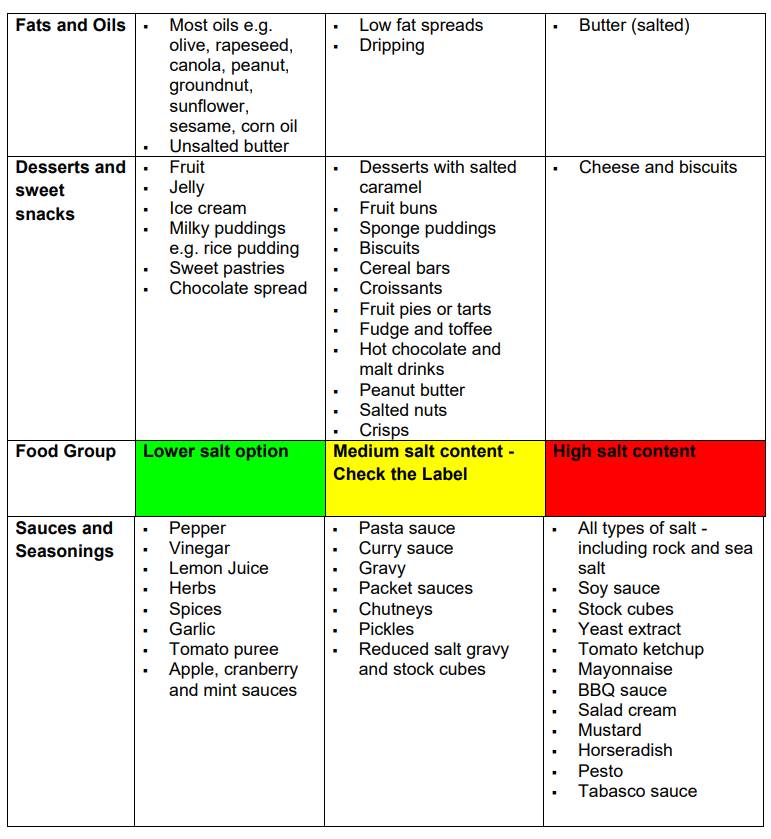Reducing your Salt Intake
Please note, this page is printable by selecting the normal print options on your computer.
Why have I been advised to reduce my salt intake?
Eating a reduced salt diet can help to reduce your risk of high blood pressure, heart disease and stroke. Salt regulates the amount of fluid in your body, so you may be advised to cut down on salt to help reduce fluid retention.
How much salt do I need?
Current guidelines recommend that an adult should have no more than 6g of salt a day, which is the equivalent of one teaspoon (children should have much less than this). However, you may be advised to follow a stricter ‘no added salt’ diet if you are having problems with fluid retention in your body.
How can I tell if a food is high in salt?
Most of the salt we eat is already added to our foods. Checking the nutrition information on food labels will tell you about the salt content of different foods. Use the table below as a guide when checking food labels and try to choose foods with a low salt content.
Top Tip – Sometimes food labels will list sodium instead of salt; to work out the salt content multiply the sodium content by 2.5. For example, if a food contains 1g sodium, it contains around 2.5g of salt.

Alternative Salts and substitutes
Salt substitutes are not suitable for everyone as they contain high levels of potassium. If you have been told by your doctor to reduce your potassium intake, these are not suitable.
Alternative salts such as Rock salt and Sea salt are not recommended as alternatives as they have the same effect on our bodies as normal table salt.
How can I reduce my salt intake?
Most of the salt in our diets comes from manufactured or processed foods – check food labels and choose foods that are lower in salt
Prepare your meals at home using fresh ingredients and avoid adding salt when cooking
Use a variety of fresh or dried herbs and spices when cooking; such as garlic, rosemary, oregano, basil, thyme, chilli, ginger etc.
Avoid adding salt or high salt condiments to your food at the table – see list below
Try adding black pepper, vinegar, balsamic vinegar, or lemon juice to your meals to add extra flavour
Foods may taste bland initially, however after 2-3 weeks your taste buds will adapt to having less salt, and you may find that high salt foods taste unpleasant
The table below shows what foods have a low, medium and high level of salt



For more information please visit:
www.actiononsalt.org.uk
http://www.actiononsalt.org.uk/resources/how-to-eat-less-salt/recipes/
www.bhf.org.uk
https://www.nhs.uk/live-well/eat-well/salt-nutrition/
Or try FoodSwitch UK – a free and easy-to-use app to help you find out what’s in the food you’re eating, so you can make simple switches to healthier options!
